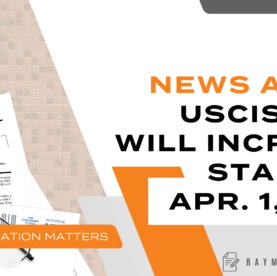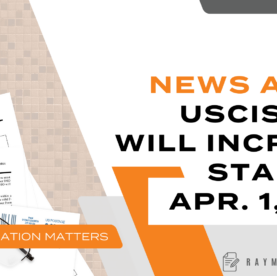How immigration plays a role in worker shortage, inflation
Today, the United States is home to the largest immigrant population in the world. More than 40 million people living in the U.S. were born in another country. With such large numbers, unsurprisingly, immigration has deeply impacted and shaped the U.S in a multitude of ways, the economy being one of them. With the influx of conflicting information and news, we must ask ourselves: what is factual and what is a common misconception regarding immigration’s impact on the U.S economy?
MYTH: Immigrants are a drain on the U.S. economy and reducing immigration would strengthen the economy.
FACT: According to The Wharton School of the University of Pennsylvania, available evidence suggests that immigration leads to more innovation, a better-educated workforce, greater occupational specialization, better matching of skills with jobs, and higher overall economic productivity. In 2016, immigrants added $2 trillion to the U.S. GDP. And in 2018, after paying $458.7 billion in the state, local, and federal taxes, immigrants were left with $1.2 trillion in spending power, which they used to purchase goods and services, thus boosting local businesses and the economy overall.
MYTH: Immigration hurts American workers and takes jobs from Americans.
FACT: The U.S. economy is dynamic, not zero-sum; when one individual obtains a job, it does not mean another individual loses a job. According to the Brookings Institution, immigrants are taking an increasingly significant role in the American economy, one that is separate from that of native-born workers. Moreover, immigrants lower the cost of some labor activities, including childcare, food preparation, house cleaning and repair, and construction, and provide more demand for housing.
As of April 2022, there are “7.4 million job openings, but there are only 6 million unemployed workers,” said Dr. Jose Bucheli, professor of Economics at New Mexico State University. The industries with a higher share of immigrant workers are seeing higher rates of unfilled jobs due to the pandemic’s travel restrictions, closure of the borders, and consulates and embassies across the world not processing visas and not processing applications for immigrants. With this roadblock, businesses are trying to make up for the lack of workers, which is costing shoppers more because it costs more for employers to fill those roles.
Bucheli added the government must create avenues that will allow a steady flow of immigration into the country to help with the worker shortage and level out the rise in costs due to inflation. Projections show that U.S. gross domestic product (GDP) could double and grow as large as $47 trillion in today’s dollars in 2050 if immigration levels are doubled to more than 2 million new permanent and temporary immigrants yearly. Per capita, this would lead to a 3% increase in average income by 2050 for all Americans compared with keeping immigration at current levels and a 7% increase compared with a zero-immigration scenario.
The United States prides itself on being a nation of immigrants. Undoubtedly, the United States’ economic future is directly linked to immigration, as generation after generation of immigrants has contributed, are contributing, and will continue to contribute to the nation’s economic vitality.
To learn more about this blog post, or if you have any other immigration concerns, please feel free to contact me at rglahoud@norris-law.com or (484) 544-0022.





